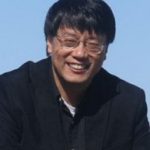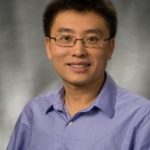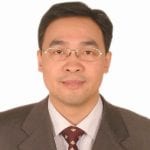Saifur Rahman
IEEE Life Fellow
President of the IEEE Power and Energy Society
Founding Director of the Advanced Research Institute
Virginia Polytechnic Institute and State University
Professor Saifur Rahman is the founding director of the Advanced Research Institute (www.ari.vt.edu) at Virginia Tech, USA where he is the Joseph R. Loring professor of electrical and computer engineering. He also directs the Center for Energy and the Global Environment (www.ceage.vt.edu). He is a Life Fellow of the IEEE and an IEEE Millennium Medal winner. He is the president of the IEEE Power and Energy Society (PES) for 2018 and 2019. He was the founding editor-in-chief of the IEEE Electrification Magazine and the IEEE Transactions on Sustainable Energy. He has published over 140 journal papers and has made over four hundred conference and invited presentations. In 2006 he served on the IEEE Board of Directors as the vice president for publications. He is a distinguished lecturer for the IEEE Power & Energy Society and has lectured on renewable energy, energy efficiency, smart grid, electric power system operation and planning, etc. in over 30 countries. He is the founder of BEM Controls, LLC, a Virginia (USA)-based software company providing building energy management solutions. He served as the chair of the US National Science Foundation Advisory Committee for International Science and Engineering from 2010 to 2013. He has conducted several energy efficiency related projects for Duke Energy, Tokyo Electric Power Company, the US Department of Defense, the State of Virginia and the US Department of Energy.
Speech Title: IoT Sensor Integration in an Energy Internet Platform
Abstract: Internet of Things (IoT) deployments offer a much higher value proposition if these can function in the context of smart buildings. Such advanced information and communication technology (ICT) applications in commercial buildings, schools, libraries, shopping centers, etc. offer low cost but highly effective monitoring and control opportunities. Sensors deployed in key locations can monitor the building environment in real-time, collect information for intelligent decision making, and facilitate various services. An IoT sensor platform has been developed that provides a unified communication platform which can integrate information from disparate sources and provide one control hierarchy. It is a powerful, low-cost, open-architecture software platform that can monitor and control major electrical loads (e.g., HVAC, lighting and plug loads), as well as solar PV systems, energy storage units and other IoT sensors in commercial buildings. The platform can provide new or legacy buildings with a building automation system (BAS) or connect with existing BAS systems in large and small commercial buildings. This platform leverages machine learning algorithms to draw insights from a deployed building’s historical operating data and occupant preferences to save energy (kWh) while increasing occupant comfort. This also allows buildings to reduce peak demand (kW) through direct communication with utilities using demand response protocols such as openADR.
Frede Blaabjerg
IEEE Fellow
President of IEEE Power Electronics Society
Distinguished Lecturer for IEEE Power Electronics Society
Vice President of Danish Academy of Technical Sciences Aalborg University
Frede Blaabjerg (S’86–M’88–SM’97–F’03) was with ABB-Scandia, Randers, Denmark, from 1987 to 1988. From 1988 to 1992, he got the PhD degree in Electrical Engineering at Aalborg University in 1995. He became an Assistant Professor in 1992, an Associate Professor in 1996, and a Full Professor of power electronics and drives in 1998. From 2017 he became a Villum Investigator. He is honoris causa at University Politehnica Timisoara (UPT), Romania and Tallinn Technical University (TTU) in Estonia.
His current research interests include power electronics and its applications such as in wind turbines, PV systems, reliability, harmonics and adjustable speed drives. He has published more than 600 journal papers in the fields of power electronics and its applications. He is the co-author of four monographs and editor of ten books in power electronics and its applications.
He has received 30 IEEE Prize Paper Awards, the IEEE PELS Distinguished Service Award in 2009, the EPE-PEMC Council Award in 2010, the IEEE William E. Newell Power Electronics Award 2014 and the Villum Kann Rasmussen Research Award 2014. He was the Editor-in-Chief of the IEEE TRANSACTIONS ON POWER ELECTRONICS from 2006 to 2012. He has been Distinguished Lecturer for the IEEE Power Electronics Society from 2005 to 2007 and for the IEEE Industry Applications Society from 2010 to 2011 as well as 2017 to 2018. In 2019-2020 he serves a President of IEEE Power Electronics Society. He is Vice-President of the Danish Academy of Technical Sciences too.
He is nominated in 2014-2018 by Thomson Reuters to be between the most 250 cited researchers in Engineering in the world.
Speech Title: Reliable Power Electronic based Smart Grids
Abstract: The world is becoming more and more electrified – it is a convenient way to transport energy and in many cases it has high efficiency. The renewable generation has passed 1000 GW of installed capacity without hydro and the modern grid become power converter dominated – with all its possible flexibilities, opportunities and challenges in terms of reliability – this presentation will discuss power grid structure, power converter technology and its reliability as well as discuss challenges like converter-converter interaction and power grid stability.
Wei-Jen Lee
IEEE Fellow
President-Elect of IEEE Industry Application Society
IEEE IAS Distinguished Lecturer
Director and Professor Energy Systems Research Center
The University of Texas at Arlington
Professor Lee received the B.S. and M.S. degrees from National Taiwan University, and the Ph.D. degree from the University of Texas, Arlington, in 1978, 1980, and 1985, respectively, all in Electrical Engineering.
In 1986, he joined the University of Texas at Arlington, where he is currently a professor of the Electrical Engineering Department and the director of the Energy Systems Research Center.
He has been involved in the revision of IEEE Std. 141, 339, 551, 739, 1584, and dot 3000 series development. He is the President Elect of the IEEE Industry Application Society (IAS). He is an editor of IEEE Transactions on Industry Applications and IAS Magazine and editorial board member of Journal of Modern Power Systems and Clean Energy (MPCE) and CSEE Journal of Power and Energy Systems. He is the project manager of IEEE/NFPA Collaboration on Arc Flash Phenomena Research Project.
Prof. Lee has been involved in research on utility deregulation, renewable energy, smart grid, microgrid, energy internet and virtual power plants (VPP), arc flash hazards and electrical safety, load and wind capacity forecasting, power quality, distribution automation and demand side management, power systems analysis, online real-time equipment diagnostic and prognostic system, and microcomputer based instrument for power systems monitoring, measurement, control, and protection. He has served as the primary investigator (PI) or Co-PI of over one hundred funded research projects with the total amount exceed US$16 million dollars. He has published more than one hundred and fifty journal papers and two hundred seventy conference proceedings. He has provided on-site training courses for power engineers in Panama, China, Korea, Saudi Arabia, Thailand, and Singapore. He has refereed numerous technical papers for IEEE, IET, and other professional organizations.
Prof. Lee is a Fellow of IEEE and registered Professional Engineer in the State of Texas.
Speech Title: Arc Flash Hazard and Electrical Safety The New Revision of IEEE Std 1584
Abstract: Though electrical incidents represent a relatively small percentage of all work-related incidents, they are disproportionately fatal. In the case of burn injury, it may result in extended hospitalization and rehabilitation. According to NFPA 70E, approximately 5 to 10 arc flash explosions occur on the job every day in the United States. Proper protection is the key to reduce casualties during these incidents. IEEE 1584 and NFPA 70E are developed to protect the safety of the workers. With the better understanding of the arc flash phenomena, several areas in the IEEE Std. 1584-2002 need further research, testing validation, and revision.
The IEEE and the NFPA (National Fire Protection Association) have joined forces on an initiative to fund and support research and testing to improve the understanding of arc flashes. The results of this collaborative project will provide information that will be used to improve electrical safety standards, predict the hazards associated with arcing faults and accompanying arc blasts, and provide practical safeguards for employees in the workplace. The identified areas include but are not limited to: 1) Heat and Thermal Effects, 2) Blast Pressure, 3) Sound, and 4) Light intensity.
This presentation will cover the basic understanding of the arc flash, performing the arcing current and incident energy calculation, and the procedures that have been carried out to provide information for the updating and clarifications of IEEE Std. 1584 – 2018 arc flash standards.
Yilu Liu
Member of National Academy of Engineering
IEEE Fellow
Governor’s Chair Professor of ORNL/UTK
Deputy Director of CURENT
University of Tennessee
Yilu Liu received her M.S. and Ph.D. degrees from the Ohio State University, Columbus, in 1986 and 1989. She received the B.S. degree from Xian Jiaotong University, China.
Dr. Liu is currently the UT-ORNL Governor’s Chair at the University of Tennessee, Knoxville and Oak Ridge National Laboratory (ORNL). She is also the deputy director of the DOE/NSF engineering research center CURENT (curent.utk.edu). She led the effort to create the North American power grid Frequency Monitoring Network FNET/GridEye (fnetpublic.utk.edu, powerit.utk.edu). Dr. Liu is an expert in large grid dynamic modeling and simulations.
Dr. Liu is a member of National Academy of Engineering, a member of the National Academy of inventors, a fellow of IEEE.
Speech Title: Grid Edge Synchronized Measurement and Applications
Abstract: The talk will introduce the research of power grid wide-area monitoring and some fascinating observations that were made possible from the grid edge synchronized data. The critical roles of wide-area phasor measurement in situation awareness, operation, and control will be discussed. The concept of electromechanical wave propagation in power grid will be demonstrated using measurement data collected from the actual grids. Applications of time synchronized data in event location, oscillation detection, model validation, and others will be discussed.
Lang Tong
IEEE Fellow
IEEE SPS Distinguished Lecturer
2018 Fulbright Distinguished Chair in Alternative Energy
Cornell University
Lang Tong joined Cornell University in 1998 where he is now the Irwin and Joan Jacobs Professor in Engineering and the Cornell site director of the Power Systems Engineering Research Center (PSERC). His current research focuses on optimization, machine learning, and market operations of smart grid and future energy systems. A Fellow of IEEE, a distinguished lecturer of the IEEE Signal Processing Society, and the 2018 Fulbright Distinguished Chair in Alternative Energy, Professor Tong has made contributions in multiple technical fields in electrical engineering, including signal processing, communications, networking, and power systems, for which he received best paper awards from the IEEE Signal Processing, Communications, and Power and Energy societies, and his students received seven student paper awards.
Speech Title: Learning the unobservable: a machine learning approach to high-resolution state estimation
Abstract: We present a machine learning approach to power system state estimation when there are limited sensor measurements such that the system is unobservable. An observable system may become unobservable when sensors are at fault, sensor data missing, or data tempered by malicious agents. Specific applications include state estimation in distribution systems when there are few fast timescale sensors deployed in the system and high-resolution state estimation in the transmission systems using only limited phasor measurement units. For these applications, deep learning technology offers promising solutions in achieving optimal state estimation with significantly lower computation cost.
Jianhui Wang
Editor-in-Chief of the IEEE Transactions on Smart Grid
IEEE PES Distinguished Lecturer
Southern Methodist University
Dr. Jianhui Wang is an associate professor at Southern Methodist University. Prior to joining SMU, Dr. Wang had an eleven-year stint at Argonne National Laboratory with the last appointment as Section Lead – Advanced Grid Modeling. He is the Secretary of the IEEE Power & Energy Society (PES) Power System Operations, Planning & Economics Committee. Dr. Wang is the Editor-in-Chief of the IEEE Transactions on Smart Grid and an IEEE PES Distinguished Lecturer. He is also a Clarivate Analytics highly cited researcher for 2018.
Speech Title: Grid Modernization: Challenges, Opportunities, and Solutions
Abstract: Our aging grid infrastructure faces increasing challenges from multiple sources including greater demand variability, stricter environmental regulations and growing cyber security concerns. Advanced smart grid technologies provide possible solutions to tackle these challenges. Meanwhile how to best utilize these new devices and technologies such as PMUs and electric vehicles remains a challenge by itself. In this talk, I will address various topics which span a multitude of areas including demand response, stochastic optimization for renewable integration, microgrids and cyber security. I will present the technical issues in implementing these technologies and corresponding potential solutions.
Gary W. Chang
IEEE Fellow
Chair of IEEE PES Transmission & Distribution Committee
Distinguished Professor and Vice President in Academic Affairs
National Chung Cheng University
Gary W. Chang obtained his Ph.D. degree from the University of Texas at Austin in 1994. He joined the Department of Electrical Engineering at National Chung Cheng University in 1998, where he holds a position of Distinguished Professor and the Vice President in Academic Affairs of the university. At present, Prof. Chang serves as an associate editor for both IEEE Transactions on Power Delivery and IEEE Power Engineering Letters. He also has served as the guest editor for special issues of several IEEE Transactions. Prof. Chang is the past Chair of IEEE PES Power Quality Subcommittee (2016-2017) and currently is the Chair of IEEE PES Transmission and Distribution Committee (2018-2019). He is a co-founder of Taiwan Smart Grid Industry Association and has been actively engaged in the collaboration between academia and local electric power industry since 2009. His areas of research interest include power systems optimization, power quality, renewable energy, and smart grid. Prof. Chang is an IEEE Fellow and a registered Professional Engineer in the state of Minnesota, USA.
Speech Title: Hybrid Intelligent Approach for Classification of Incipient Faults in Transmission Network
Abstract: Voltage sags are often manifested as the permanent or incipient faults occurred in the power system because of equipment malfunctions or failures. The incipient faults which are originally self-cleaning faults may repeatedly occur and gradually develop to a permanent fault after its first occurrence. The incipient fault detection is considered as a crucial task in predictive maintenance for power apparatuses such as transformers, circuit breakers, and underground cables. This presentation describes a hybrid method for incipient faults detection and classification. The proposed method firstly adopts four methods to extract peculiar features from voltage waveforms of abnormal phases recorded by power quality monitors at substations in a transmission network. Then, a feature selection method and the support vector machine combined with particle swarm optimization and are applied to classify various types of incipient faults. Test results show that the proposed method contributes relatively accurate classification of incipient faults and can be employed as a useful tool for condition monitoring of major power equipment in the smart grid.
Tapan Saha
IEEE Fellow
IEEE Power & Energy Society Distinguished Lecturer
Director of Australasian Transformer Innovation Centre
University of Queensland
Tapan Saha received his PhD from the University of Queensland (UQ), Brisbane, Australia in 1994. Previously, Tapan obtained a B. SC in Electrical & Electronic Engineering from Bangladesh University of Engineering and Technology (BUET), Dhaka in 1982 and a Master of Technology in Electrical Engineering from Indian Institute of Technology, New Delhi in 1985. He has been with the University of Queensland since 1996, where he has been a Professor of Electrical Engineering since 2005. Currently he is an Adjunct Professor of Xi’an Jiao Tong University in China. Previously he worked in James Cook University of North Queensland, Townsville for two and a half years and in BUET for three and a half years. Currently he is the Leader of the Power & Energy Systems Research Group, Director of Australasian Transformer Innovation Centre & Leader of UQ Solar. He is a Fellow of IEEE and a Fellow and CPEng of Institution of Engineers Australia. He is an IEEE Power & Energy Society Distinguished Lecturer. Tapan has successfully supervised 40 PhD students as the principal supervisor. He has received extensive funding from Australian competitive agencies, state and federal governments and electricity industry. He has published more than 500 papers in IEEE, IET & Elsevier Journals and peer reviewed conferences.
Speech Title: Challenges and opportunities of Solar PV integrations to national grids
Abstract: Many countries are promoting renewable energy generations to address climate change and to reduce carbon emissions. Among them, solar photovoltaic (PV) is making significant proliferations in both distribution and transmission networks. Solar PV generation is variable and hence they bring many challenges for network and overall energy management. At the University of Queensland, our research team has been involved in a number of solar PV projects, which are progressing towards addressing some of the major challenges the electricity industry is currently facing. This keynote speech will present some key outcomes from our research projects to address the challenges and opportunities from PV integrations.
Zhe Chen
IEEE Fellow
Leader of Wind Power Research Program
Aalborg University
Zhe Chen received the B.Eng. and M.Sc. degrees in Electrical Engineering from Northeast China Institute of Electric Power Engineering, China, in 1982, 1986 respectively, the Ph.D. degree in Power and Control, from University of Durham, England, in 1997.
Dr Chen has been a Professor with the Department of Energy Technology, Aalborg University, Denmark since 2002. He is the Danish Principle Investigator for Wind Energy of Sino-Danish Centre for Education and Research (SDC). The leader of Wind Power System Research program at the Department of Energy Technology, Aalborg University.
Professor Chen’s main current research interests are wind energy and modern energy systems. He has led and participated many international and national research projects. He is a Fellow of IEEE, a Fellow of IET (London, U.K.) and a Chartered Engineer in the U.K.
Speech Title: Renewable Energy Based Clean Energy Systems
Abstract: Many nations have set long-term energy targets to develop renewable energy technology to provide sustainable and clean energy, to reduce the use of fossil fuel, to improve environment and life quality. The energy sector is facing the challenges to providing reliable, flexible, and price-competitive energy services to communities. With the development and deployment of innovative, sustainable low-carbon energy technologies, the interdependence of different energy carriers, such as power, gas and heat, and information technology have been continuously increased, many new features are emerging. This presentation will describe renewable energy technology developments, integration of multi energy systems, as well as some challenges in power systems.
Hongbin Sun
IEEE Fellow, IET Fellow
ChangJiang Scholar Chair Professor
Tsinghua University
Hongbin Sun received his double B.S. degrees from Tsinghua University in 1992, the Ph. D from Dept. of E.E., Tsinghua University in 1996. From 2007.9 to 2008.9, he was a visiting professor with School of EECS at the Washington State University in Pullman. He is currently a ChangJiang Scholar Chair professor of Electrical Engineering, Director of Energy Management and Control Research Center, Deputy Dean of Academic Affair Office, Tsinghua University. He also is the Director of Lab of Smart Grid and Renewable Energy, Tsinghua-Berkeley Shenzhen Institute (TBSI). He is IEEE Fellow and IET Fellow, Vice Chair of Energy Committee of World Federal Engineering Organization (WFEO), Chair of IEEE PES Technical Committee on Energy Internet, Deputy Chair of CSEE Technical Committee on Energy Internet, and Chair of IEEE PES Working Group on Smart Grid Voltage Control. He also serves as deputy EIC of CSEE JPES, editor of the IEEE TPWRS and IEEE PEL, associate editor of IET RPG, and member of the Editorial Board of Applied Energy and several Chinese journals. He is the founding Chair of IEEE Conference on Energy Internet and Energy System Integration (EI2). His research interests include Energy Management System, System-wide Automatic Voltage Control, Energy Internet and Energy System Integration. He was awarded the second-class prize of China National Technology Innovation Award for his contribution on development of new generation of energy management system. He has published more than 400 peer-reviewed papers and 4 books. He has been authorized more than 10 US Patents of Invention and 100 Chinese Patents of Invention.
Speech Title: Automatic Operator(AO): Architecture, Key Technologies and Applications
Abstract: With the development of power grids, how to select pivotal features influencing secure operation and discover security knowledge have become the most challenge topic for complex power grids. In the traditional dispatch pattern, dispatching rules are made by experts, which is time-consuming and difficult to find out security features comprehensively and correctly. It will result in neither secure nor economical for power system operations. Thus, it is urgent to develop automatic operator (AO) by artificial intelligence, which we have been working on over the recent ten years. First, the principle and architecture of AO is presented. Then the key technologies of AO are developed, including power transfer interface detection, security feature selection, security knowledge discovery, and knowledge management and application. Furthermore, the AO system is developed originally and has been put into online applications in several Provincial Power Grids in China, including the Guangdong Power Grid. Instead of rough and offline dispatching rules, fine rules can be acquired online by AO, promoting the intelligent decision making in dispatch.
Xu Bingyin
Director of Smart Grid Research Center of Shandong University of Technology
The Chairman of the board of Kehui Power Automation Ltd.
Prof. Xu Bingyin received Bachelor and Master Degrees on power system automation from Shandong University, China, in 1982 and 1987 respectively, and was awarded Ph.D of power system automation of Xi’an Jiaotong University, China, in 1991. He studied in The City University, UK, from Oct. 1988 to Oct., 1990 as part of split-Ph.D training program. He is a member of technical committee of CIRED Chinese national committee,and a member of WG17 (Use of IEC61850 for distributed energy resources and distribution automation) of IEC TC 57. His research interests are fault location and monitoring of power lines, distribution automation and protection as well as smart distribution grids.
Speech Title: Developments of Earth Fault Protection for Non-solidly Earthed Networks
Abstract: In the absence of a more reliable method, many utilities in China still use manual switching to identify faulty feeders in medium voltage networks with non-solidly earthed neutrals (i.e. fully isolated or Peterson coil compensated networks). There is therefore an urgent need for a reliable earth fault detection technique to improve supply quality and protect networks from long duration over voltages. Most earth fault protections in use today are based on steady state power frequency or harmonic components. The field performance of these systems has been far from satisfactory due to weak and unstable fault currents. For many years it has been realized that transient based earth fault protection could overcome the problems encountered by steady state methods because transient fault currents have much higher magnitude than steady state values and are largely unaffected by the presence/absence of Peterson coils. Transient methods were first proposed in the early 1950s in Germany and compared the initial polarities of zero sequence voltage and current. No significant progress in the use of transient techniques was then reported until the late 1990s when modern microelectronics, and high speed data acquisition and processing, provided the opportunity to develop new transient protection techniques. New developments in transient based earth fault protection are introduced. Practical experiences with the application of transients based on earth fault protection in China are presented.










